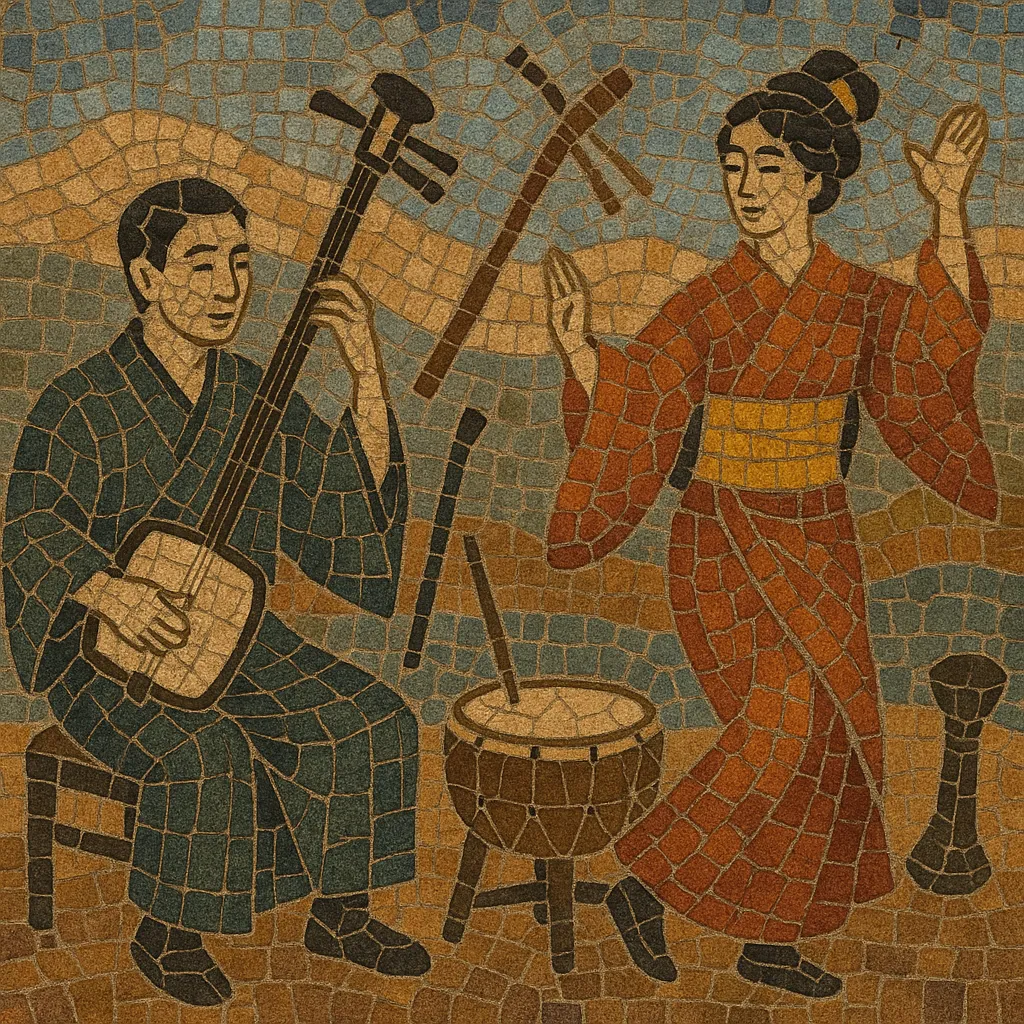Min'yō refers to the diverse body of Japanese folk songs that arose from everyday life—work, festivals, travel, drinking gatherings, and lullabies—across regions of Japan. The songs are typically strophic, use local dialects, and often include onomatopoeic calls and interjections (kakegoe) such as “sore!” or “yoisho!” that energize group participation.
Musically, min'yō commonly employs Japanese pentatonic scales—especially the anhemitonic yo scale and the hemitonic in-sen scale—with characteristic melismatic ornaments (kobushi), tight, bright vocal timbres, and flexible timing that respects ma (expressive space). Accompaniments are traditionally provided by shamisen, shinobue (transverse bamboo flute), shakuhachi, taiko and hand drums, and sometimes koto, with heterophonic textures rather than harmonic progressions. Stylistically, subtypes such as “-bushi” and “-ondo” reflect narrative vs. dance-oriented tendencies, respectively, with well-known regional examples like Soran-bushi (Hokkaidō), Tsugaru folk repertoire (Aomori), and Sado okesa (Niigata).
Min'yō emerged organically from communal life in agrarian and fishing communities, with roots traceable to the Edo period (1600s–1800s). While distinct from elite court (gagaku) and Buddhist chant (shōmyō) traditions, it absorbed their modal sensibilities and aesthetics of ma (space) and timbre. Village rituals and Shintō festivities (kagura) provided occasions for song and dance, and local work processes (rice planting, net hauling, coal mining) shaped repertories and performance practices.
By the late Edo into Meiji (late 1800s), regional identities crystallized: Hokkaidō’s Soran-bushi, Aomori’s Tsugaru songs, Niigata’s Sado okesa, and Kyūshū’s tankō-bushi (coal miners’ song), among others. Shamisen accompaniment grew in prominence, and specialized singers and accompanists developed notable schools. Urbanization and travel spread these repertoires beyond their home regions, while itinerant performers helped standardize certain variants.
With the advent of recording and radio in the early–mid 20th century, min'yō reached national audiences. Stage presentations, competitions, and preservation societies codified styles and pedagogies, while the popular song industry (kayōkyoku) and later enka adopted min'yō scales, ornaments, and storytelling tropes. The Tsugaru-jamisen concert style grew from min'yō accompaniment into a virtuosic solo tradition.
Postwar to present, min'yō thrives through local festivals (matsuri), folk associations, school clubs, and national contests. Contemporary artists fuse min'yō elements with jazz, rock, and pop while maintaining core vocal techniques and scales. Archival work, community transmission, and media continue to sustain the living, regionally varied repertoire across Japan.


